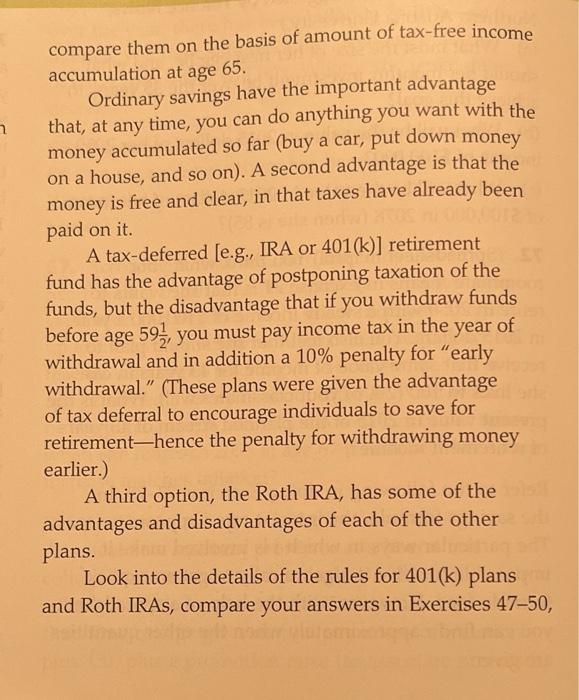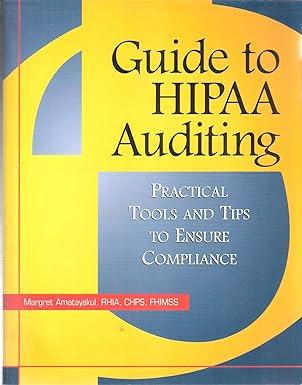2. Exercises 47-50 (pages 902-903) ask you to look at various forms of tax-deferred and ordinary savings and compare them on the basis of amount of tax-free income accumulation at age 65 . Ordinary savings have the important advantage that, at any time, you can do anything you want with the money accumulated so far (buy a car, put down money on a house, and so on). A second advantage is that the money is free and clear, in that taxes have already been paid on it. A tax-deferred [e.g., IRA or 401(k)] retirement fund has the advantage of postponing taxation of the funds, but the disadvantage that if you withdraw funds before age 5921, you must pay income tax in the year of withdrawal and in addition a 10% penalty for "early withdrawal." (These plans were given the advantage of tax deferral to encourage individuals to save for retirement-hence the penalty for withdrawing money earlier.) A third option, the Roth IRA, has some of the advantages and disadvantages of each of the other plans. Look into the details of the rules for 401(k) plans and Roth IRAs, compare your answers in Exercises 47-50, and devise and describe your own plan for how you will save for retirement. Your report should run two to three pages. 2. Exercises 47-50 (pages 902-903) ask you to look at various forms of tax-deferred and ordinary savings and compare them on the basis of amount of tax-free income accumulation at age 65 . Ordinary savings have the important advantage that, at any time, you can do anything you want with the money accumulated so far (buy a car, put down money on a house, and so on). A second advantage is that the money is free and clear, in that taxes have already been paid on it. A tax-deferred [e.g., IRA or 401(k)] retirement fund has the advantage of postponing taxation of the funds, but the disadvantage that if you withdraw funds before age 5921, you must pay income tax in the year of withdrawal and in addition a 10% penalty for "early withdrawal." (These plans were given the advantage of tax deferral to encourage individuals to save for retirement-hence the penalty for withdrawing money earlier.) A third option, the Roth IRA, has some of the advantages and disadvantages of each of the other plans. Look into the details of the rules for 401(k) plans and Roth IRAs, compare your answers in Exercises 47-50, and devise and describe your own plan for how you will save for retirement. Your report should run two to three pages









